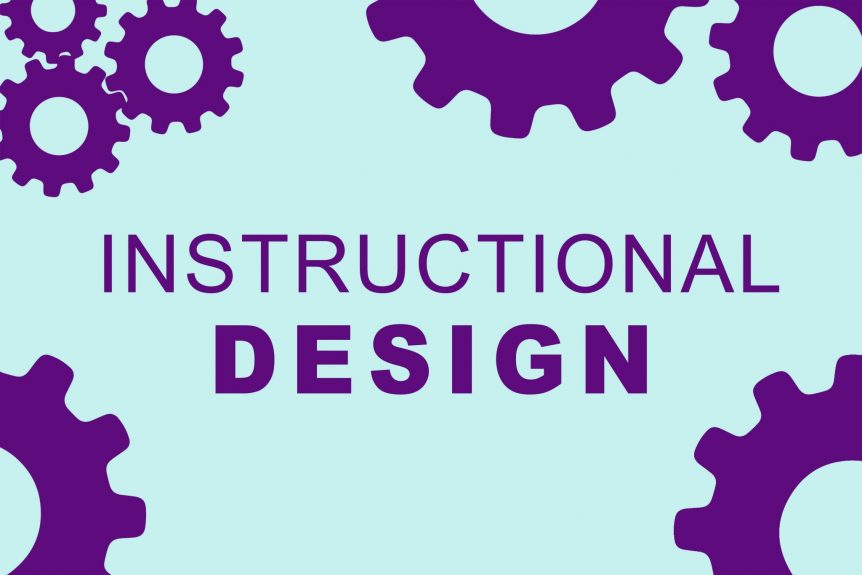What is Instructional Design in E-Learning
Instructional Design in e-learning involves designing courses in a way that makes it easier for learners to acquire new skills and knowledge. Instructional design does this my making e-learning courses more effective and efficient as well as making them practical and visually appealing to learners.
Okay, that could be a definition you apply to anyone creating an e-learning course. At least, it is the objective at the beginning – whether or not the designer achieves it in the end is another matter. That said, nobody sets out initially to create an e-learning course that looks bad, is difficult to use, and gets in the way of the learning process.
The Instructional Design Difference
While everyone wants to create e-learning courses that work, experienced instructional design professionals apply tried and tested processes to ensure this happens. This includes going through various stages during the design to achieve the desired outcomes.
The designer will also use various techniques within the e-learning course. These techniques facilitate and improve the learning experience, regardless of the content.
In other words, rather than simply providing information to learners, instructional design involves actively adding elements and training techniques to the e-learning course to help the learner successfully acquire and then retain new knowledge or skills.
Key Skills of an E-Learning Instructional Designer
There are specific skills that an instructional designer must have to ensure they develop courses that help learners acquire skills and knowledge. Those skills include:
- Have an understanding of how people learn
- Must understand how various learning techniques and tools apply to different types of learner
- Must also understand the impact of design on the learning process
- Should have analytical skills to measure results
- Also needs technical abilities to implement all the above
The 5-Stage Instructional Design Process for Creating E-Learning Courses
Before going through the five-stage process to create an e-learning course using instructional design, it is important to mention its core element – the learner.
The learner must be at the centre of everything. This is not always the case with e-learning courses as, too often, the content takes centre stage.
Instructional designers, on the other hand, understand that content is secondary. Instead, their focus is always on the learner.
Step 1: Planning
This stage must take place before any work begins on gathering information, designing course elements, or creating content. There are three main pieces of information the e-learning course developer must learn in order to start the instructional design process in the right way.
That information involves getting answers to the following questions:
- What is the objective of the business? This could be anything from improving productivity to reducing accident rates to compliance, and more.
- Who are the learners? What jobs do they do, what are their motivations for doing the course, what skills and knowledge do they already have, and more.
- What skills and knowledge should the learner have once they complete the course?
Step 2: Developing the Structure of the Course
The second step involves using the information gathered in Step 1 to begin developing a structure for the e-learning course. This will involve multiple elements including:
- Deciding on the best way to present the information to learners based on who they are, what they already know, and what they need to know once they complete the course.
- Develop an initial flow of information ensuring it is logical, sequential, and uncluttered. Part of this may also involve identifying breakout elements, i.e. topics or pieces of content that are not part of the core course information but which some learners will need.
- Decide on the level of personalisation that will be built into the course.
- Identify the learning tools that will be used to facilitate the learning experience, building this into the overall structure. Examples of learning tools include micro learning, spaced repetition, blended learning, etc.
Stage 3: Gathering Topic Information
This is the first point at which the designer will start getting into the detail of the content. It involves gathering content from multiple sources. This includes through research, although in most cases it is necessary to gather content from subject matter experts in the organisation.
Stage 4: Creating the Content
This is the full build stage where the structure, design, and content described above is pulled into an e-learning course. It involves creating all the elements, including text content and multimedia elements as well as gamification sections, quizzes, and more.
Stage 5: Review and Update
The final stage involves reviewing the course to identify any areas that are not performing as expected. For example, are learners struggling to progress through a certain section because the content doesn’t provide sufficient information or context? When these flaws are identified, they should be addressed.
Working with an Instructional Design Professional
You will get the best results from your e-learning course when you outsource to an experienced instructional design professional. This means better learner outcomes and improved return on investment.
